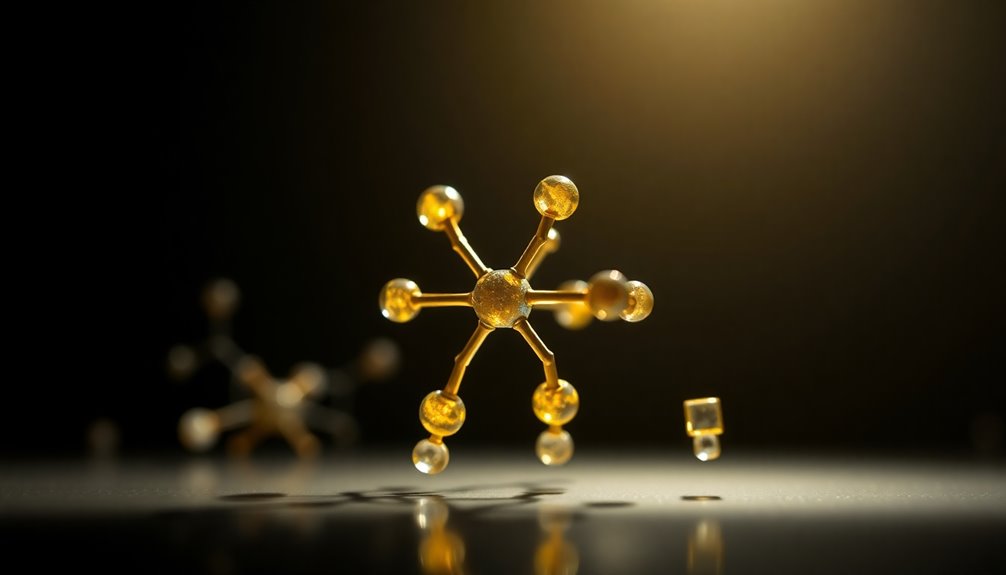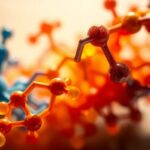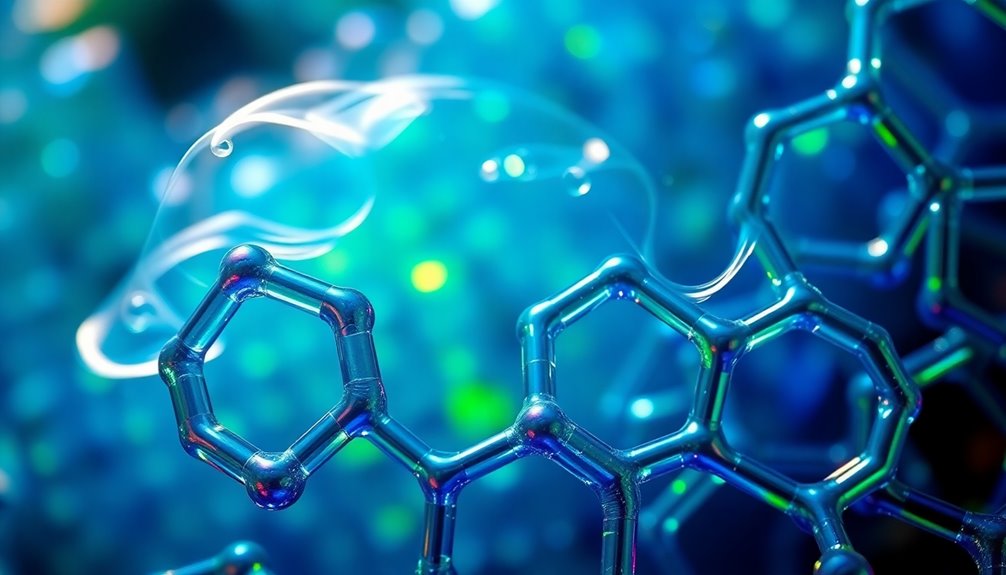Histidine isn't classified as an aromatic amino acid in standard definitions, but it does have unique characteristics worth noting. Its imidazole side chain forms a five-membered aromatic ring, which retains its aromaticity even when protonated. This feature allows histidine to play a crucial role in various biochemical processes, like enzyme catalysis and hemoglobin function. While it shares some properties with aromatic amino acids, its classification is distinct. If you're curious about its dietary sources or its significance in metabolism, there's plenty more to explore on this fascinating amino acid.
Key Takeaways
- Histidine is classified as an α-amino acid, distinguished by its imidazole side chain.
- The imidazole ring of histidine is a five-membered structure with aromatic properties.
- Despite having an aromatic ring, histidine is not classified as an aromatic amino acid by standard definitions.
- The imidazole ring retains aromaticity even when protonated, allowing versatile biochemical interactions.
- Histidine's unique properties contribute significantly to its roles in enzyme catalysis and various metabolic processes.
Understanding Aromatic Amino Acids
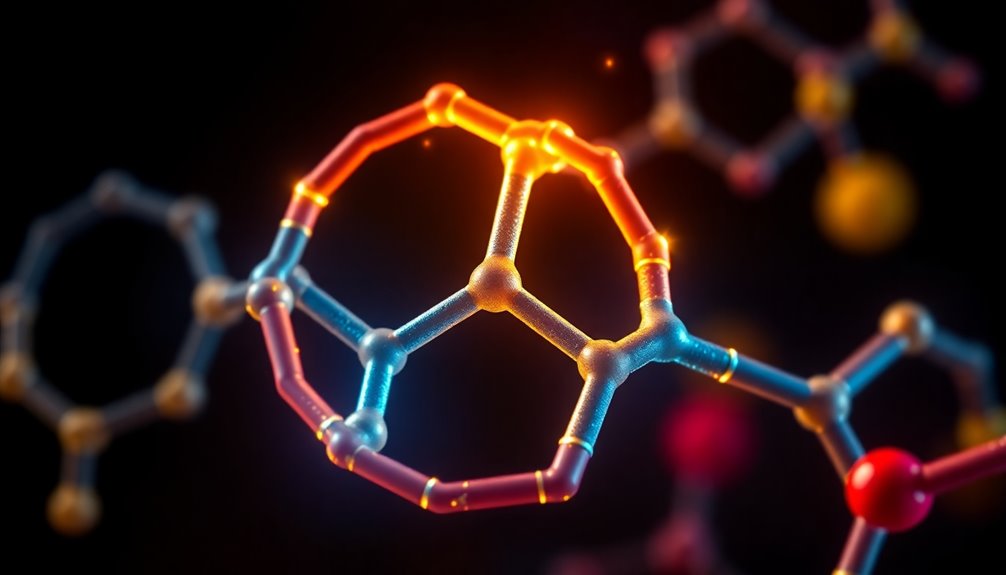
When you immerse yourself in the world of amino acids, you'll find that aromatic amino acids play an essential role in biochemistry.
These compounds, including histidine, tyrosine, and tryptophan, are characterized by their ability to absorb UV light due to their unique structures.
The imidazole ring in histidine, which contains two nitrogen atoms, enhances its basicity and allows it to participate actively in biochemical reactions. This characteristic makes histidine vital for enzyme function, particularly in acid-base catalysis.
The presence of aromaticity in these amino acids not only influences protein stability but also impacts their interactions within biological systems.
Understanding these properties helps you appreciate the intricate roles aromatic amino acids play in life's molecular processes.
Histidine's Imidazole Ring

Histidine's imidazole ring stands out as an important feature that defines its biochemical behavior. This five-membered aromatic ring includes two nitrogen atoms, which play significant roles in its unique properties.
The imidazole ring retains its aromaticity even when protonated, making it versatile for biochemical interactions. You'll notice that the nitrogen atoms exhibit different basicities; the $sp^2$ nitrogen is more basic than the $sp^3$ nitrogen due to their structural positions.
With a pKa ranging from 6 to 7, the protonated imidazole ring efficiently facilitates proton transfer in enzyme active sites at physiological pH.
Comparison With Other Aromatic Amino Acids
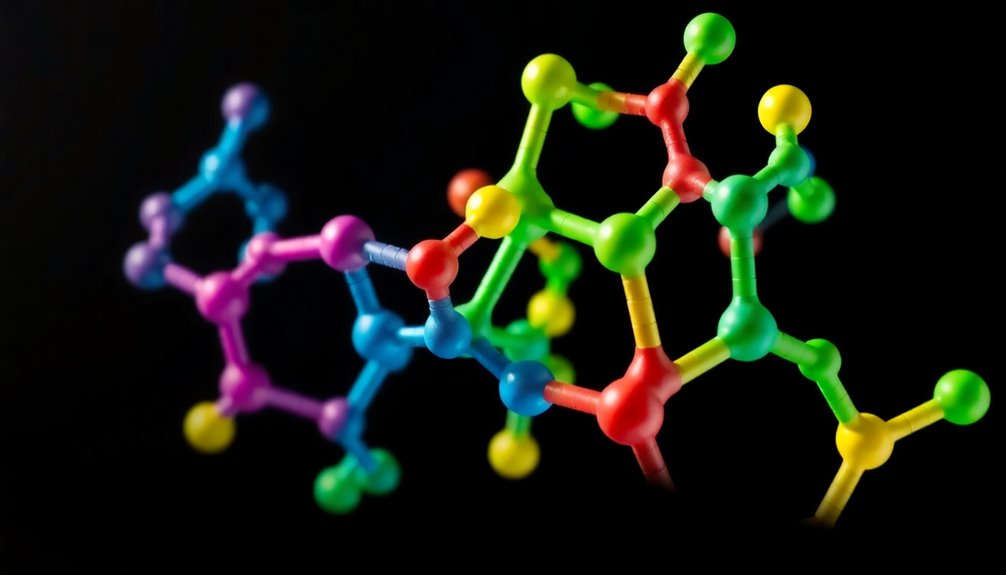
The unique properties of histidine's imidazole ring set it apart from other aromatic amino acids like phenylalanine, tyrosine, and tryptophan.
While phenylalanine and tyrosine feature simple phenyl rings, tryptophan has a complex indole structure.
Histidine's aromatic ring retains its aromaticity even when protonated, thanks to its unique pKa of around 6. This allows histidine to exist in both protonated and deprotonated forms near physiological pH, unlike tyrosine with its higher pKa.
Furthermore, histidine's imidazole nitrogen is more basic, enabling it to participate actively in enzyme functions, particularly in proton transfer.
Its structural flexibility also allows histidine to engage in diverse biochemical interactions, making it essential in various metabolic processes.
Ph Effects on Histidine
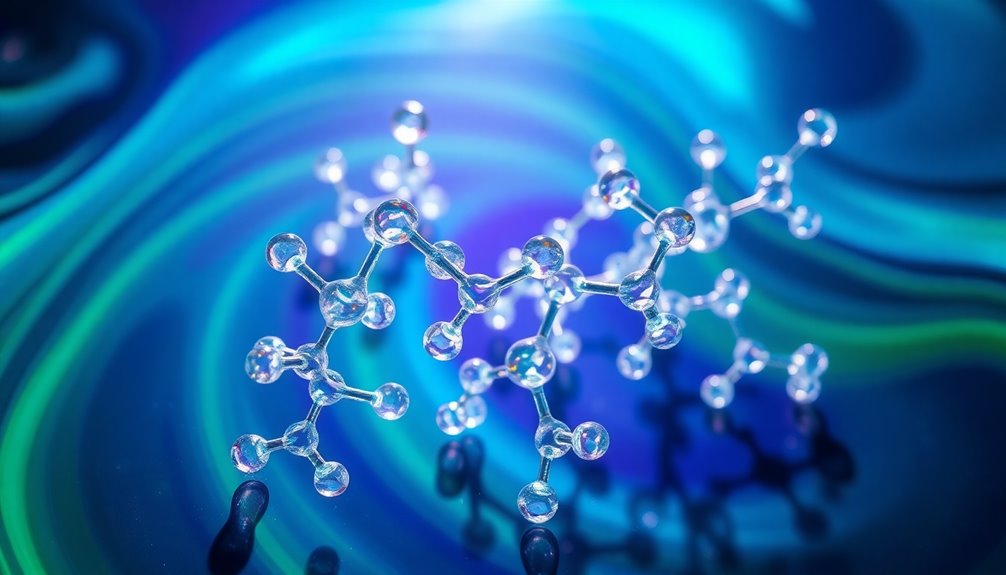
As pH levels fluctuate, they significantly influence histidine's behavior and function in proteins. The imidazole ring in histidine allows for unique protonation states, essential for its role in enzymatic reactions.
| pH Level | Protonation State |
|---|---|
| < 6 | Protonated (positive charge) |
| ~6 | 50% Protonated |
| > 6 | Deprotonated (neutral) |
At physiological pH, histidine is protonated about 50% of the time, impacting its basicity and reactivity. Importantly, even when protonated, the imidazole ring retains its aromaticity, as the electron pair orientation on the nitrogen remains perpendicular to the aromatic system. This unique characteristic helps histidine play a pivotal role in biological processes.
Histidine's Role in Proteins
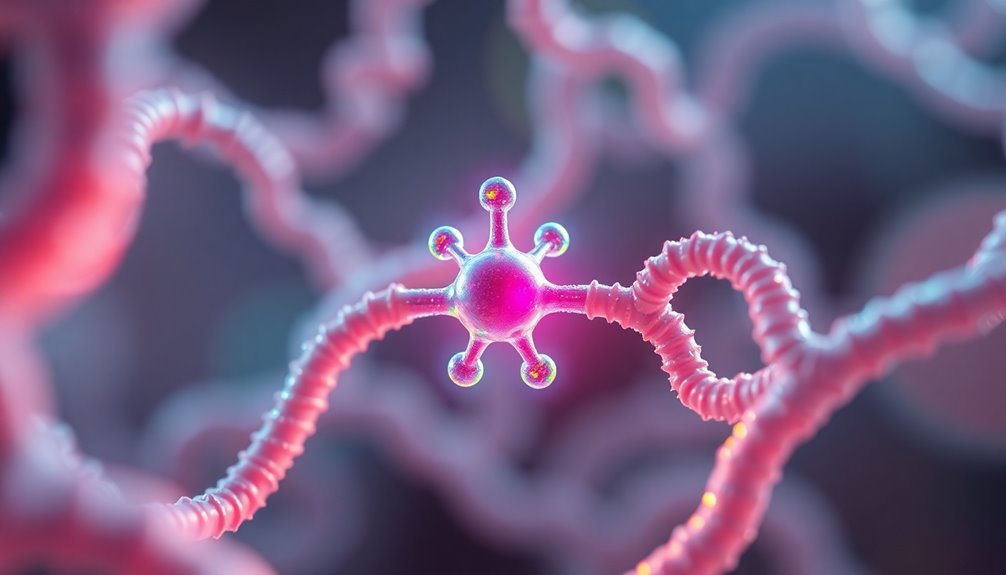
Histidine's unique structure makes it essential in enzyme active sites, where it often plays a key role in catalysis.
Its ability to facilitate proton transfer and act as a nucleophile allows it to participate in critical biochemical reactions.
Understanding these functions highlights histidine's importance in protein dynamics and energy transfer.
Enzyme Active Sites
Often found in enzyme active sites, histidine plays an essential role in catalysis due to its unique imidazole ring. Histidine is aromatic, allowing its nitrogen atom to participate in various reactions.
Its side chain has a pKa around 6.0, enabling it to easily gain or lose protons near physiological pH. This property makes histidine a versatile acid-base catalyst, important for many enzymatic processes.
The lone pair on its nitrogen atom acts as a strong nucleophile, facilitating transient covalent bonds with substrates. Additionally, histidine's minimal steric hindrance enables effective positioning within the active site, optimizing interactions with substrates and cofactors.
This efficiency enhances overall enzyme activity, showcasing histidine's significant contributions to biochemical reactions.
Proton Transfer Mechanism
Enzyme active sites benefit from histidine's unique imidazole ring, which plays a key role in proton transfer mechanisms within proteins. Its pKa value is close to physiological pH, enabling it to easily switch between protonated and deprotonated states. The basic nitrogen in the imidazole ring acts as a strong nucleophile, facilitating efficient proton transfers during biochemical reactions.
| Property | Role in Proton Transfer |
|---|---|
| Imidazole Ring | Central to proton transfer |
| Nucleophilic Action | Promotes catalytic activity |
| Steric Hindrance | Minimal, enhancing flexibility |
| Hydrogen Bonding | Stabilizes transformation states |
These attributes make histidine essential for enzyme function, particularly in metalloenzymes, where metal ion oxidation states influence its protonation state.
Nucleophilic Activity
While exploring the dynamics of nucleophilic activity in proteins, you'll find that histidine plays a pivotal role due to its unique imidazole ring. The nitrogen atom in the imidazole carries a free lone pair, making histidine a strong nucleophile. This characteristic allows it to participate in proton transfer and essential catalytic reactions within enzymes.
With a pKa around 6 to 7, histidine can easily switch between protonated and deprotonated states, which is vital for enzyme active sites. Its minimal steric hindrance enhances its interaction with substrates, facilitating biochemical processes.
Additionally, histidine's ability to form phosphohistidine intermediates makes it significant in high-energy phosphoryl group transfers, ultimately aiding in ATP generation.
Dietary Sources of Histidine

Since histidine is an essential amino acid for infants and semi-essential for adults, it's crucial to include it in your diet. To support protein synthesis and prevent deficiency, focus on these dietary sources:
| Food Source | Histidine Content (mg/100g) |
|---|---|
| Meat (beef, pork) | 1,200 |
| Fish (tuna, salmon) | 1,300 |
| Poultry (chicken) | 1,100 |
| Dairy Products | 800 |
| Nuts and Seeds | 700 |
You'll find that choices like soy products and quinoa are especially beneficial if you're vegetarian or vegan. Aim for around 10 mg of histidine per kilogram of body weight daily, adjusting based on your age, sex, and activity level.
Historical Perspectives on Histidine

Histidine has a fascinating history that reveals much about its biochemical identity and classification. The debate over its classification as an aromatic amino acid stems from its imidazole ring, which maintains aromaticity even when protonated.
Historically, textbooks oversimplified histidine's properties, leading to misconceptions about its basicity compared to other amino acids. Early biochemistry discussions highlighted histidine's unique role in enzyme active sites, showcasing its ability to participate in proton transfer and catalysis due to its pKa near physiological pH.
This confusion has persisted for over a decade, as ongoing community discussions reflect an evolving understanding of histidine's biochemical significance. These historical perspectives reveal how teaching materials often prioritize clarity, sometimes sacrificing an all-encompassing understanding of histidine's complex nature.
Frequently Asked Questions
Why Is Histidine Not an Aromatic Amino Acid?
Histidine's classification can be tricky. While it has an imidazole ring that's aromatic, its unique properties set it apart from typical aromatic amino acids.
You'll notice that histidine can be protonated at physiological pH, affecting its behavior in biochemical reactions.
Unlike other aromatic amino acids that mainly contribute to hydrophobicity, histidine's role in enzyme active sites and protein interactions highlights its versatility, making it less straightforward to categorize as purely aromatic.
What Are the 4 Aromatic Amino Acids?
Have you ever wondered which amino acids are aromatic? The four aromatic amino acids are phenylalanine, tyrosine, tryptophan, and histidine.
Each of these has a unique aromatic side chain that contributes to their distinct properties.
Phenylalanine's nonpolar character, tyrosine's polar –OH group, tryptophan's indole ring, and histidine's imidazole ring all play crucial roles in protein structure and function.
Understanding these can deepen your appreciation of biochemistry!
What Kind of Amino Acid Is Histidine?
Histidine's a unique amino acid that plays a vital role in various biological processes.
It's classified as a polar, positively charged amino acid due to its imidazole side chain. This structure allows it to act as both an acid and a base, making it versatile in enzyme active sites.
You'll find histidine involved in vital reactions, especially those requiring proton transfer, enhancing its importance in metabolic pathways and protein stability.
Is Histidine Aromatic for MCAT?
Imagine a molecular dance, where electrons twirl in a delightful rhythm; that's histidine for you.
When you're prepping for the MCAT, remember that histidine's imidazole ring gives it aromatic qualities. It's not just a pretty face; it retains its aromatic characteristics even when protonated.
This unique feature plays a pivotal role in enzyme activity, making histidine indispensable in biological reactions.
Conclusion
To summarize, histidine isn't classified as an aromatic amino acid despite its unique imidazole ring. It plays an essential role in protein function and can be influenced by pH levels. Notably, about 10% of the amino acids in human proteins are histidine, showcasing its significance in our biology. So, next time you think about amino acids, remember histidine's important contributions and its distinctive structure that sets it apart from the true aromatic amino acids!

